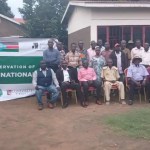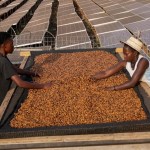(WHITE NILE) – Ongoing conflict in South Sudan has triggered a sharp rise in displacement, with more than 174,000 people fleeing across the border into Sudan since late February, according to new data released by humanitarian partners. The movement comes amid worsening insecurity, particularly in Upper Nile State, where clashes between rival armed groups have intensified in recent months.
Of those fleeing South Sudan, approximately 58,000 are South Sudanese nationals. The majority have sought refuge in Sudan’s White Nile State, which is now hosting over half (54 percent) of these arrivals. Other significant numbers are sheltering in West Kordofan (14 percent), South Kordofan (12 percent), Blue Nile (11 percent), and East Darfur (8 percent). Smaller groups have reached North and South Darfur, despite limited access due to flooding and insecurity.
White Nile has become a primary entry point, with UNHCR and Sudan’s Commission for Refugees (COR) conducting protection monitoring and movement tracking at the Joda border crossing. Registration of new arrivals is currently underway, although officials warn that overcrowding and land shortages pose significant challenges. Many displaced families are living in overcrowded shelters or makeshift housing without sufficient space for expansion.
In the Darfur region, poor infrastructure and seasonal rains have made access to border areas particularly difficult. Humanitarian workers face major logistical hurdles in delivering supplies, while refugee leaders are struggling to maintain communication with their communities and aid agencies due to a lack of mobile and internet coverage.
Complicating the crisis further, Sudan itself is facing pressure from returnees. An estimated 80,000 Sudanese nationals have returned to Blue Nile State, with another 36,000 returning to White Nile State. These movements are expected to continue until the height of the rainy season, which typically spans from August to October, when most roads become impassable due to flooding.
Currently, UNHCR is providing support for returnees upon arrival in Blue Nile State, while the White Nile State government is assisting with transportation for those seeking to return to their areas of origin. However, resources remain stretched, and humanitarian agencies are calling for increased funding and logistical support to meet the growing needs of both new arrivals and returnees.
Displacement Overview (as of July 27, 2025)
| Category | Estimated Number | Key Locations |
|---|---|---|
| Total individuals displaced to Sudan | 174,000+ | White Nile, Kordofan, Darfur |
| South Sudanese among them | 58,000 | 54% in White Nile |
| Sudanese returnees to Blue Nile | 80,000 | Blue Nile State |
| Sudanese returnees to White Nile | 36,000 | White Nile State |
These population movements are occurring against a backdrop of deepening economic hardship. For those displaced, access to basic goods is made even more difficult by inflation. With the South Sudanese Pound (SSP) trading at roughly 4,600 per US Dollar, local purchasing power remains weak. For example, 10,000 SSP now equals only about $2.17 USD, limiting the ability of displaced families to meet essential needs.
The combination of insecurity, displacement, and limited humanitarian access poses growing risks to both refugees and returnees in the coming weeks, especially as heavy rains threaten to isolate entire communities.


















































